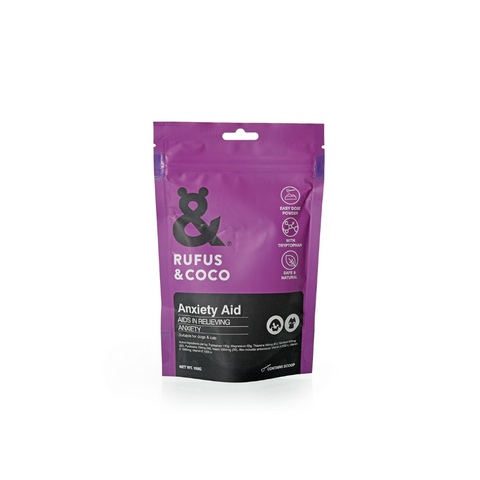Do Cats Get Cold?
- by Rufus and Coco
Cats are adaptable creatures and will seek out warm places on their own if they feel a bit cold.
But what is too cold in the winter, and how can you make sure that your pet remains comfortable and, more importantly, healthy? We’re answering that question and giving you some valuable tips in today’s article, so keep on reading!
How to Keep Your Cat Warm and Healthy During Winter
Before we talk about keeping your cat cosy and warm during winter, we need to note the temperatures at which their little bodies feel most at ease.
Cats have a body temperature that resembles that of humans, but since they are equipped with a coat, they will have better resistance to the cold compared to people. Of course, that same rule does not apply to breeds such as the Peterbald or the Ukrainian Levkoy, as they need a warmer ambience to remain healthy.
In general, all cats will begin to feel cold when the temperature goes under 7-8 degrees °C. Although this species prefers warmth, it can do well with an indoor temperature of at least 10-15 degrees. So make sure that you set your thermostat accordingly, even when you’re out of the house.
Get a heated pet bed
These days, electric blankets and other heating products comes in sizes that are well appropriate for your feline friends.
The downside to using an electric heated pet bed is that it shuts itself off. Most items are outfitted with self-protection mechanisms that make them go into ‘sleep’ mode after 30 minutes or an hour just to prevent damage.
Self-warming pet beds function differently as they are made from unique materials that enable them to become warmer as your cat sits on them for longer.
You can also fill up several glass bottles with hot water, cover them in blankets, and place them near your pet’s bed. If you do this, you’ll see your cat getting nice and cosy after just a few minutes - as cats instinctively seek out warm spots.
Make sure your cat has the proper diet
As you probably know, whenever winter comes around, most people tend to become 1-2kg heavier. The reason is that our metabolism ensures that we have enough fat tissue that can protect us from the cold.
The same happens with pets, including cats. They need to eat a little more so that they can be protected against the cold. If you have a cat that also goes outdoors, you might notice an increase in their appetite at the end of autumn and all throughout winter.
However, keeping your cat indoors in the cold season is far better as they can’t interact with other animals which they can potentially catch a disease from.
If your kitty is anxious about being cooped up at home, you can sprinkle a bit of our Anxiety Aid on their food help ensure their emotional balance. You can also give your cat enough treats, and if possible, switch to a calorie-dense diet if your vet finds this to be appropriate.
Increase the number of play sessions
Keeping your cat indoors mean they might not get as much physical and mental stimulation needed to keep them healthy. Exercise is important as it can boost a cat’s metabolism, not to mention that it will also keep them warm. They might need a bit more calories after an intense play session, but they’ll also feel warmer, more refreshed, and generally in a better mood.
If your cat’s old toys don’t seem to interest them anymore, you might want to try out our Fling & Chase Cat Toy or the Pounce & Purrsuit Rechargeable Cat Toy – both of which can stimulate your cat’s hunting instincts.
Play dress-up
While most cats just aren’t as easy to convince as their canine counterparts, some will agree to you keeping them warm with a pet fleece sweater or other warm clothing.
Of course, it might take you some time to get your cat used to the idea that they now have to wear a piece of clothing, but you can rely on positive reinforcement for this task.
After you buy the cat coat or jacket, make sure you let your pet smell it and even sit on it if they find that a good idea. Give them snacks each time you try to put it on their body so that they can associate the idea of the sweater with a reward.
Maintain your cat’s grooming routine and vet visits
A huge part of keeping your cat healthy during winter is keeping up with vet visits. This can be particularly important for senior cats and kittens, as well as pregnant cats, as they are exceptionally vulnerable if they catch a cold.
But even if your pet is completely healthy, you shouldn’t forget about regular grooming habits. Your cat’s skin is in charge of keeping part of their body temperature at an optimal level, so it needs a bit of extra care during the cold season.
You can use our Pet Grooming Glove or give her a nice brush with our Self Cleaning Deshedder Brush every once in a while.
Since giving your cat baths in the winter is not really recommended, you can always rely on our Water Free Wash to keep your feline fresh. This dry shampoo cleans any debris and absorbs natural oils, and also leaves your cat’s coat smelling nice.
Final thoughts
Although the likelihood of a cat developing hypothermia if they live indoors is very low, if your cat also goes outside and the weather is really bad, this can lead to a serious health issue.
If a cat is too cold, they might have a slow heartbeat, be confused, or experience muscle stiffness. Hypothermia is an emergency, so if you suspect your pet is affected by it, take them to the vet clinic as soon as possible.
- Posted in:
- cat
- health-tips
- how to help
- tips











